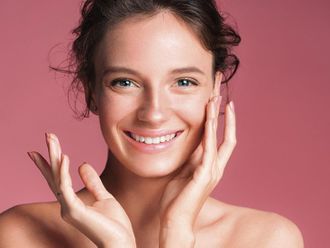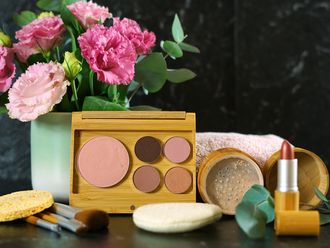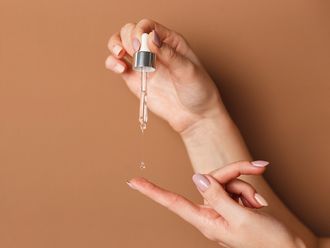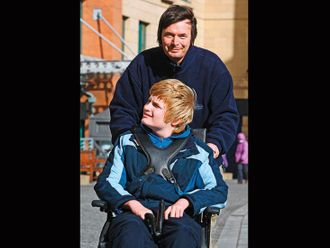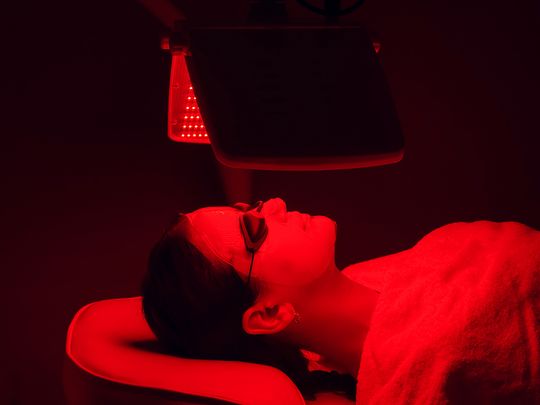
Have you ever wondered if sunshine could be bottled and used to heal your body? Well, red light therapy might be the next thing closest to it. From out-of-this-world research (literally) to skincare, LED light therapy has rocketed from space exploration to become a popular dermatology treatment.
As Susan McGaw, an American Dubai-based dermatologist and skin specialist explains the essence of this therapy: Red light therapy is a type of photo-medicine that uses light to treat the skin and other health conditions. From all the colours present in light, the red wavelength in this treatment sinks deeper into the skin and stimulates collagen production, inflammation, especially if you suffer from psoriasis and eczema, self-repair, oxygen formation and much more. It is believed to speed up wound healing and tissue repair. However, research on the exact benefits and risks of red light therapy are still under review.
The history of red light therapy
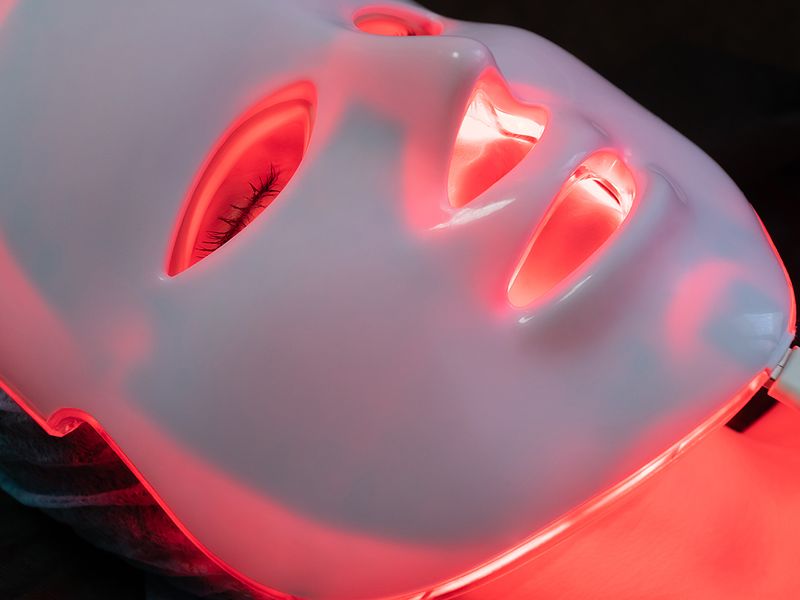
Red light therapy research has gone from patching up rats to sprouting space potatoes. A versatile beam of light, indeed!
RLT was commonly believed to be accidentally discovered by Endre Mester in 1967 at the Semmelweis Medical University in Budapest, Hungary. He observed that laser light helped in promoting hair growth and wound healing in rats. By the 1990s, red light had its space shuttle debut on the second US Microgravity Laboratory Spacelab mission (STS-73, Columbia) as part of experiments in plant growth.
As red light therapy researcher Janis T. Eells, a professor in the Department of Biomedical Sciences at the University of Wisconsin-Milwaukee told Forbes magazine, astronauts began to notice little scratches on their hands healing. Nothing heals in space, so what followed were many years of research on these lights for human trials.
McGaw explains, “These studies helped in formulating the idea that red light therapy could be used as a kind of photomedicine, which is the application of light for health and healing. The visible light penetrates the biological tissues, such as cells, muscle tissues and nerve tissues. The red and near-infrared light, called NIIR light, another name for red light therapy, sinks deeper than the green, blue or violet light,” she says.
With the help of red-light therapy, you expose an area of your body to a specific wavelength of red light, which is emitted by a device that can range in size, she says.
How does red light therapy work?
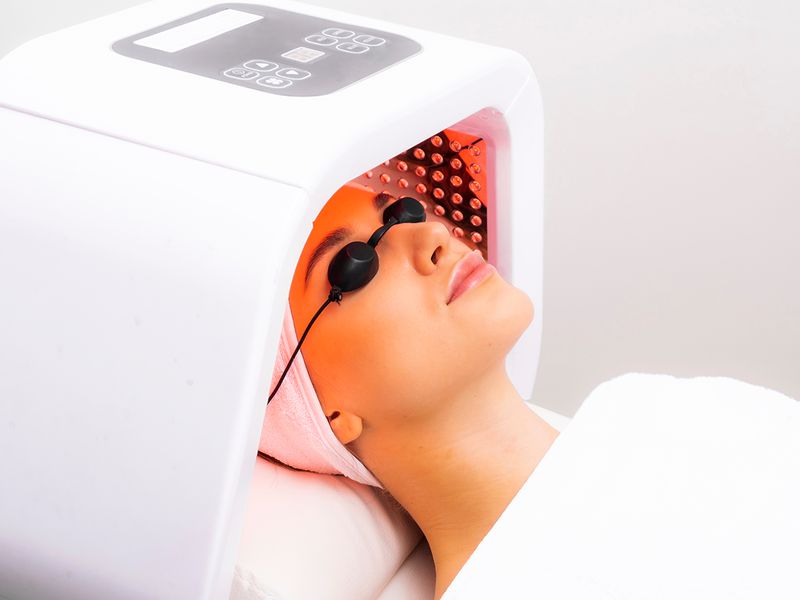
It’s like a coffee fix for your cells.
Orsolya Matheisz, the co-founder of the Orskin Aesthetic Clinic Dubai, breaks it down. “It’s a non-invasive treatment, that increases the concentration level of cells, so they can function better,” she explains. The light activates the mitochondria, which is the powerhouse of the cell. There is an increase in the transportation of electrons, oxygen consumption, and your levels of adenosine triphosphate.

It is a non-invasive treatment that can also increase adenosine triphosphate concentration level of cells, which can be considered fuel for our cells so they can function better. It also helps treat inflammation and wounds from burns or any other sources. It also improves hair growth and repairs the tissues....
Owing to this boost of energy, the cells can perform their functions of healing and growth more effectively.
The longer the wavelength, the deeper the penetration into the skin, she says. This Red LED light induces chemical changes in the skin through a process known as photo bio-modulation, as McGaw explains. “The treatment exposes skin to low levels of red or near infra-red light, with most devices using 630 to 700 nm wavelength of light. It's believed to stimulate fibroblasts, which produce collagen, that can reduce and prevent wrinkles, and improve skin texture,” she adds.
Comparing RLT to traditional skin devices, such as lasers and intense pulsed light (IPL), she notes that lasers have the potential to cause controlled damage to the skin, as it is used to trigger an inflammatory reaction to promote wrinkle reduction and reduce redness. On the other hand, red light therapy doesn’t cause trauma to the skin, and positive effects are seen without damage to the skin or discomfort.
Does it really work? What science says
According to McGaw, different studies in the past 20 years have theorised that RLT has an entire spectrum of benefits, including treating carpal syndrome, reducing myopia progression, scars and relieving pain and inflammation. In fact, even a 2018 US-based study titled Photobiomodulation: Lasers vs Light Emitting Diodes even suggested RLT may help manage negative cancer treatment side effects. However, the consensus is still not clear on this aspect of the treatment. Currently, the most promising results emerge from its role in skincare.

According to Lisa Mayer, an Abu Dhabi-based skincare specialist, who explains further, red light therapy is believed to promote collagen synthesis in the dermal layer of the skin and reduces the inflammation in the skin. “Red light is absorbed by your skin cells. It also helps boost collagen production, which keeps your skin elastic and healthy,” she says. This can also be beneficial for scarring, fine lines and acne. However, there’s more to it than just reducing redness: It can even help reduce pain and soreness, or heal deeper tissues, she adds.
Science backs some of these claims too: According to a 2013 study titled Low-level laser (light) therapy (LLLT) in skin: stimulating, healing, restoring, published in the US National Library of Medicine, there is increased blood flow, reduced inflammation, increased levels of collagen and the production of fibroblasts with red light. In 2020, a study published in the US-based Journal of Drugs in Dermatology found similar results, adding that RLT is effective for treating ageing skin.
Can it reduce fat loss?
Red light treatment has also been used to treat pattern hair loss and alopecia, and to reduce body fat. The jury is still out on the latter, though a few studies shows that the application of red light may affect adipocytes, which are cells that store fat.
In a 2011 study published in US-based academic journal Obesity Surgery, 40 adults with excess weight were regularly exposed to red light therapy. Their adipocyte cells released triglycerides, resulting in fat loss. Participants in this study lost approximately 2.1 centimeters of girth over a four-week period, according to the study.
Another 2015 study of 64 women living with obesity published in American academic journal Lasers in Surgery and Medicine observed that red light therapy could increase fat loss when coupled with exercise. In the study, two groups worked out for 20 minutes three times per week and then received red light therapy or a placebo light therapy. Those who worked out and then had red light therapy exhibited a greater reduction in fat mass, indicating that red light therapy may improve metabolic inflexibility.
However, research is still in the preliminary stages, regarding the enhancement of fat loss.
Are there side effects to red light therapy?
In general, there aren’t side effects, according to the dermatologists. However, they warn that it is still advisable to consult with a skincare specialist before attempting it. You need to monitor the amount of time that you use it for, and also make sure that the device is completely safe, before attempting the treatment.
The specialists also do warn that individuals who suffer from autoimmune diseases such as lupus might want to steer clear of it, as they are already sensitive to ultraviolet light, and could risk a lupus flare. However, they should check with their physicians first, as research regarding lupus patients and red light therapy is still in the preliminary stages.



